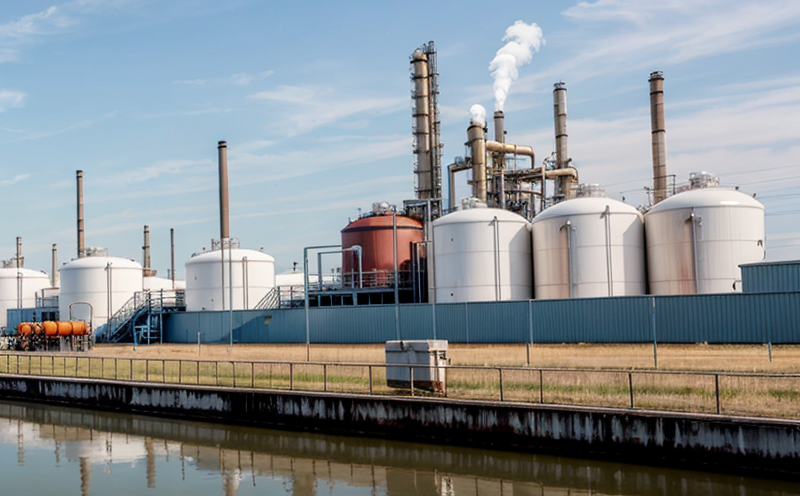EPA 8081 Organochlorine Pesticide Safety Testing
The EPA 8081 method is a critical tool used by industries and regulatory bodies to ensure compliance with environmental regulations. This method specifically targets the analysis of organochlorine pesticides in water samples, which are known for their persistence and bioaccumulation properties. These pesticides pose significant risks if not properly managed, making accurate and reliable testing essential.
Organochlorines have been widely used historically but were largely banned due to their potential harm to human health and the environment. The EPA 8081 method is part of a broader suite of tests designed to monitor water quality and ensure compliance with environmental laws such as the Federal Insecticide, Fungicide, and Rodenticide Act (FIFRA) and the Safe Drinking Water Act (SDWA).
The test procedure involves several steps: sample collection, extraction, clean-up, derivatization, and finally, analysis using gas chromatography with mass spectrometry (GC-MS). Each step is crucial to ensure accurate detection of organochlorine compounds. The method aims to provide precise quantification levels that are critical for regulatory compliance.
Understanding the scope and methodology of EPA 8081 helps in appreciating its importance in industrial safety protocols. This test ensures that industries using or disposing of these pesticides adhere to stringent environmental standards. By doing so, it mitigates risks associated with potential contamination of water sources, thereby protecting public health and the environment.
The use of this method is particularly relevant for industries involved in agriculture, manufacturing, and wastewater treatment. These sectors often handle organochlorine compounds directly or indirectly through their operations. Regular testing helps identify any unintended releases into the environment, allowing for timely corrective actions to be taken.
Compliance with EPA 8081 not only ensures legal adherence but also contributes positively to corporate social responsibility by demonstrating a commitment to environmental stewardship. This aligns with broader sustainability goals and can enhance a company's reputation among stakeholders.
Scope and Methodology
| Step | Description |
|---|---|
| Sample Collection | Water samples are collected from various points of interest, such as discharge outlets or specific water bodies. Samples must be representative and free from contamination. |
| Extraction | The extracted organochlorine compounds are isolated using a solvent-based method followed by clean-up procedures to remove matrix interferences. |
| Derivatization | The extracted compounds undergo derivatization to enhance their detectability and improve the quality of GC-MS analysis. |
| Analysis | Gas Chromatography-Mass Spectrometry (GC-MS) is employed for precise identification and quantification of organochlorine compounds in the sample. |
The EPA 8081 method strictly adheres to international standards, ensuring accurate and consistent results. It follows stringent acceptance criteria that are validated through inter-laboratory comparisons and proficiency testing programs.
By employing this rigorous methodology, the laboratory ensures reliable data that can be trusted for making informed decisions regarding compliance and operational adjustments. This precision is vital in maintaining a balance between industrial activity and environmental protection.
Why Choose This Test
The EPA 8081 Organochlorine Pesticide Safety Testing offers several advantages that make it indispensable for industries dealing with these compounds:
- Rigorous Compliance: Ensures strict adherence to regulatory standards set by the Environmental Protection Agency.
- Enhanced Safety: Helps in identifying potential risks early, allowing for proactive measures to mitigate them.
- Sustainability: Contributes to the overall goal of environmental protection and sustainable practices.
- Reputation Building: Demonstrates a commitment to responsible business practices, enhancing corporate reputation.
- Cost-Effective: Prevents costly remediation efforts by identifying issues early in the process.
- Expertise: Benefits from the expertise of experienced professionals who understand the nuances of these tests.
The test is particularly beneficial for industries that handle organochlorine compounds, such as those involved in pesticide production, wastewater treatment, and agricultural operations. By using this method, they can ensure that their processes are not only compliant with regulations but also safe and environmentally friendly.
International Acceptance and Recognition
The EPA 8081 Organochlorine Pesticide Safety Testing is widely recognized and accepted globally. Its rigorous methodology aligns with international standards, ensuring that results are comparable across different regions and laboratories:
- ISO/IEC 17025: Compliance with the International Organization for Standardization's accreditation standard ensures reliability.
- ASTM D896-19: Reference to this standard underscores the method’s adherence to recognized industry practices.
- EN ISO 17025:2017: Further validation through European standards.
The use of such internationally accepted methods not only ensures consistency but also facilitates collaboration and data sharing among different jurisdictions. This harmonization is crucial in a globalized market where compliance and safety are paramount.
By adhering to these international standards, the testing method reinforces trust and credibility, making it a preferred choice for industries worldwide. The recognition of EPA 8081 ensures that results are universally accepted, enhancing the overall reputation and standing of the tested entities.





